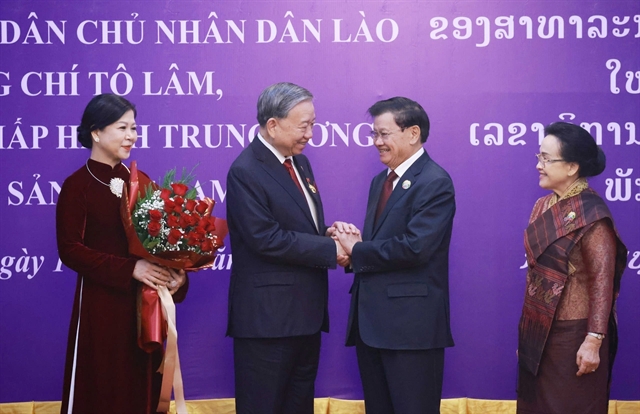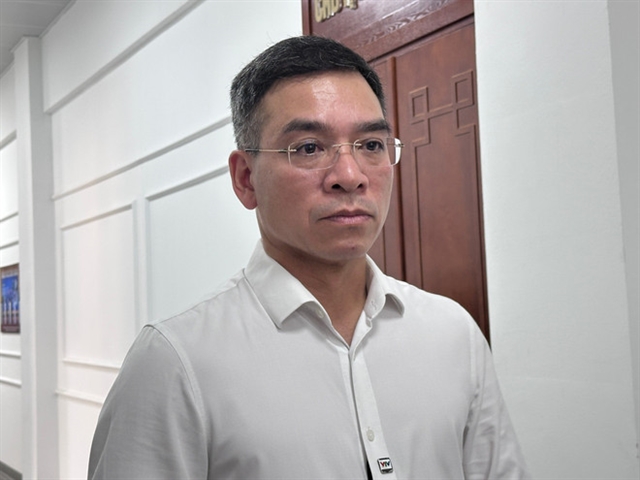 Opinion
Opinion

 |
| Hà Anh Đức, director of the Department of Medical Service Administration under the Ministry of Health. — VNA/VNS Photo Thuỳ Giang |
Hà Anh Đức, director of the Department of Medical Service Administration under the Ministry of Health, speaks to the Vietnam News Agency about developing medical tourism.
Could you tell us about Việt Nam’s potential for developing medical tourism?
Medical tourism is emerging as a global trend, generating significant revenue for many countries in the region. With its many natural advantages, Việt Nam is seen as having great potential to develop this sector. But to make a breakthrough, the country's health and tourism sectors need to closely coordinate and overcome limitations related to quality, promotion, policies and management mechanisms.
Việt Nam has many favourable conditions to become an attractive medical tourism destination. With a long coastline, numerous scenic spots, diverse climates and a reputation as a safe country with friendly people, Việt Nam has left a very good impression on the international community.
The number of international tourists visiting Việt Nam in recent years has increased rapidly thanks to open-door policies and strong promotion efforts. This is an essential customer source for medical tourism, since international visitors not only seek leisure experiences and cultural exploration, but also look for healthcare, beauty treatments, dentistry and reproductive support services.
Could you analyse in more detail the benefits and revenue sources from medical tourism?
Statistics show that the number of overseas Vietnamese and international tourists visiting Việt Nam for tourism combined with medical services is increasing.
Before COVID-19, the country received approximately 300,000 such visitors. Currently, this number has reached tens of millions and continues to rise. The proportion of tourists interested in medical services is growing steadily.
In comparison with the region, Thailand has generated about US$6 billion annually from medical tourism, Singapore about $2 billion and Japan around $4 billion. Meanwhile, Việt Nam currently earns only a few hundred million dollars — a relatively modest figure considering its available potential.
What are the strengths of the healthcare sector that attract patients for medical examinations and treatment?
Last year, Việt Nam was listed among 110 countries with the best healthcare systems in the world, ranking 89th overall and scoring highly in healthcare infrastructure and the expertise of its medical staff.
A major advantage of Vietnamese healthcare is its competitive pricing, short waiting times for medical examinations and treatment and friendly, efficient services. Healthcare costs in Việt Nam are only about 30-50 per cent of those in countries like Singapore or Thailand.
Competitive costs are one of the biggest advantages for attracting and developing medical tourism in Việt Nam. For example, in dentistry, the cost to implant a tooth in Việt Nam is approximately $1,000, which is one-fifth of the cost in the US (around $5,000) and much lower than in Thailand.
For in vitro fertilisation (IVF) services, the cost in Việt Nam is only one-third that of Thailand and one-fifth of the US, with good quality and quick turnaround times. This is a major advantage to attract customers from developed countries and regions with high demand.
Additionally, receiving medical services in Việt Nam saves indirect costs due to short waiting times for surgeries or diagnostic imaging such as MRI and CT scans, whereas in some countries the wait can be up to six months.
The development of medical tourism still faces many difficulties. Could you talk more about the challenges?
Currently, although Việt Nam’s medical technologies have made significant progress and costs remain competitive, they have not yet been standardised according to global standards.
At present, only one public hospital and a few private hospitals have met Joint Commission International (JCI) criteria. The JCI certification, a medical quality management system, is often likened to a hotel rating, with about 1,300 rigorous criteria.
Additionally, the lack of brand promotion is a significant weakness. Despite reasonable pricing and good technology, international customers have limited awareness of Vietnamese medical facilities. At the same time, insurance mechanisms, financial policies, visa procedures and dispute resolution processes remain fragmented, causing international patients and insurance companies to remain hesitant about choosing Việt Nam.
Even for regular tourists, the demand for a robust emergency medical response system is an important factor that reassures them when visiting Việt Nam. This is an indispensable supporting element in medical tourism.
What solutions are being implemented to develop medical tourism into a high-value economic sector?
Recently, Resolution 72-NQ/TW was issued, setting a goal of developing specialised medical centres to reduce the overload on large hospitals, while meeting the demand for high-quality treatment domestically. The issue of patients not following the correct referral pathway also needs to be addressed through improved coordination and health communication.
To elevate its position, the health sector is focusing on building flagship service packages such as aesthetics, dentistry, ophthalmology, diagnostic imaging and reproductive support (including IVF). These are areas where Việt Nam has strengths, and where costs are significantly lower than in developed countries.
These services will be promoted through tourism forums and international travel agencies, combined with solutions for insurance and interconnected electronic medical records. E-medical records can be shared within Việt Nam as well as with insurance companies and medical facilities in the patients’ home countries, ensuring transparency and reducing the risk of disputes.
Việt Nam will also standardise service quality according to international criteria, covering infrastructure, facilities, technical procedures and medical staff trained in foreign languages. These criteria will be publicly available on information platforms, making it easier for international customers to access, compare and choose services.
Medical tourism is a multidisciplinary field. To succeed, close coordination is required among the health, tourism, public security, diplomacy and finance sectors, along with support from businesses and the community. The Ministry of Health has therefore advised that this project be developed at the Government level instead of only at the ministry level.
The long-term goal of medical tourism is not only to increase revenue, but also to uphold the position of Việt Nam’s healthcare sector.
When the quality of facilities, expertise, equipment and system management is improved, Vietnamese people will feel confident receiving treatment domestically, while Việt Nam can become a reputable medical destination in the region. — VNS




